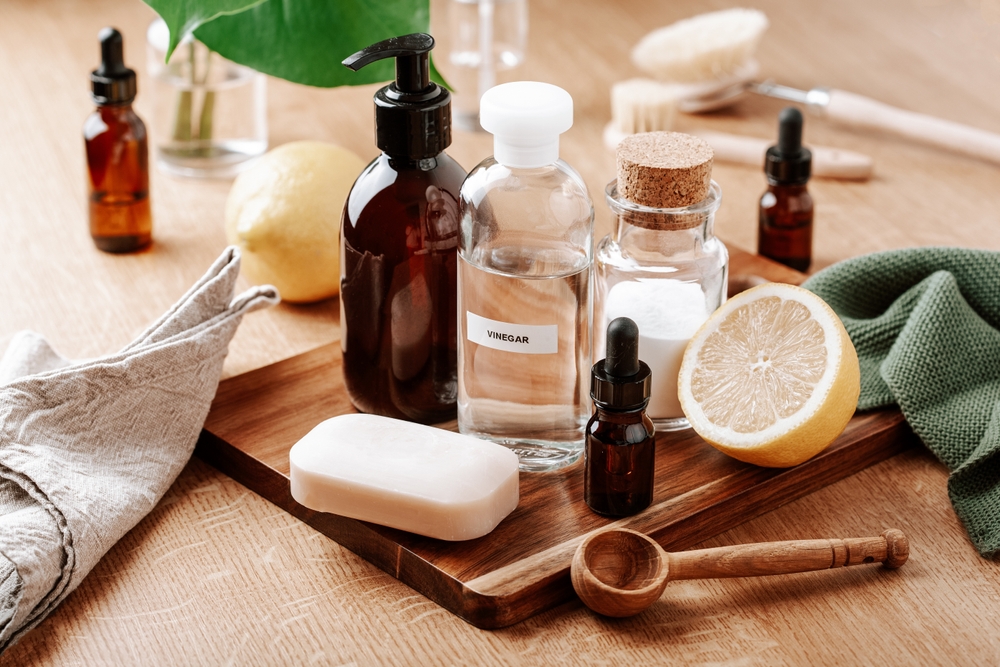When it comes to everyday purchases, the items in your shopping cart might not always stay on the market. Some essentials you rely on could soon be banned or restricted, prompting a reevaluation of your go-to buys. Whether it’s for environmental, health, or ethical reasons, these changes can be both surprising and significant. Here’s a heads-up on 13 staples facing potential phase-outs. Making informed choices now can prepare you for the changes ahead.
1. Plastic Straws

Plastic straws have been a convenient companion for on-the-go drinks, yet their environmental impact is undeniable. With a lifespan of mere minutes during use, these items persist in the environment for over 200 years. Researchers like Dr. Jenna Jambeck from the University of Georgia have highlighted the staggering volume of plastic waste entering the oceans annually, estimated at 8 million metric tons. Many cities and countries are already taking steps to eliminate these straws, encouraging the switch to reusable or biodegradable alternatives. Staying ahead of these changes can help you ease into more sustainable sipping habits.
The push to ban plastic straws is part of a broader movement towards reducing single-use plastics. As awareness grows, businesses are responding with innovative solutions, such as edible or compostable straws. Embracing these changes not only aligns with global sustainability goals but also reduces your own ecological footprint. Engaging with these alternatives can become a small yet impactful part of your daily routine. As legislation tightens, making the switch now can save hassle later.
2. Single-Use Coffee Pods

The convenience of popping a coffee pod into a machine has made single-use coffee pods immensely popular. However, this convenience comes with a hefty environmental price tag. The pods, often made from a combination of plastic and aluminum, are difficult to recycle, leading to millions of them ending up in landfills. Many companies are now developing more sustainable options, such as compostable pods or reusable stainless steel ones. By transitioning to these eco-friendly choices, you can reduce waste while still enjoying your morning brew.
There’s also a shift in consumer awareness regarding the environmental impact of these products. Many coffee enthusiasts are returning to traditional brewing methods, which produce less waste and often result in a tastier cup of coffee. Supporting companies that prioritize sustainable practices can further drive industry changes. While it might seem like a small change, opting for a greener coffee habit contributes to a larger environmental benefit. As more restrictions emerge, being ahead of the curve can keep your caffeine fix guilt-free.
3. Chemical Sunscreens

While sunscreens are essential for protecting your skin from harmful UV rays, not all formulations are friendly to marine ecosystems. Chemicals such as oxybenzone and octinoxate, commonly found in many sunscreens, have been shown to contribute to coral bleaching. A study published in the journal “Environmental Health Perspectives” by Dr. Craig Downs suggests these chemicals can harm marine life even at low concentrations. As a result, places like Hawaii and Key West have already banned certain sunscreens to protect their coral reefs. Switching to mineral-based sunscreens can ensure you’re safeguarding both your skin and the ocean.
Beyond ecological impacts, there’s also growing concern about how these chemicals affect human health. Mineral sunscreens, which rely on zinc oxide or titanium dioxide, provide effective sun protection without these risks. As awareness spreads, more brands are developing eco-friendly and reef-safe sunscreen options. Incorporating these into your skincare routine allows you to enjoy sunny days responsibly. By choosing products with a focus on safety and sustainability, you can contribute to healthier oceans and communities.
4. Synthetic Fragrances

Synthetic fragrances are present in a multitude of everyday products, from perfumes to cleaning supplies. However, many of these scents are derived from petrochemicals, which can pose health and environmental concerns. Some individuals experience allergic reactions or respiratory issues from exposure to synthetic fragrances. Additionally, when washed down the drain, these substances can end up in waterways, affecting aquatic life. Opting for products labeled as using natural or essential oil-based fragrances can be a healthier choice for you and the planet.
The demand for transparency is growing as people become more conscious of the ingredients in their products. Brands are responding by offering options free from synthetic fragrances, focusing instead on plant-derived scents. This shift not only benefits personal health but also encourages safer manufacturing practices. Choosing products with natural fragrances can elevate your well-being while supporting a cleaner environment. As regulatory pressure mounts, transitioning to these alternatives can help you stay ahead of changing market trends.
5. Non-Recyclable Packaging

Non-recyclable packaging, often used for convenience, is becoming a hot topic in environmental circles. Many food items, household goods, and personal care products are encased in materials that are difficult to recycle. According to a report by the Ellen MacArthur Foundation, only 14% of plastic packaging is collected for recycling globally. This has prompted both companies and governments to explore more sustainable packaging solutions. By choosing products with recyclable or compostable packaging, you’re helping drive this positive change.
Efforts to reduce non-recyclable packaging are gaining momentum as consumers push for more eco-friendly options. Many brands are experimenting with new materials, such as bioplastics or paper-based alternatives, to address this issue. Supporting products that prioritize sustainable packaging can accelerate the adoption of these innovations. As regulatory initiatives continue to unfold, choosing recyclable options helps ensure you’re part of the solution, not the problem. Embracing these choices today can make a larger impact tomorrow.
6. Microbead-Containing Products

Microbeads, those tiny plastic particles found in many exfoliating skincare products, have been under scrutiny for their environmental impact. These particles are too small to be filtered out by water treatment plants, allowing them to flow directly into rivers and oceans. Once in the water, they can be ingested by marine animals, entering the food chain and potentially causing harm. Many countries have already banned microbeads, leading to a shift towards natural exfoliants. By choosing microbead-free products, you can contribute to cleaner waterways and healthier marine life.
The shift away from microbeads has spurred innovation in the skincare industry. Brands are turning to natural materials like sugar, salt, or ground seeds to provide effective exfoliation without the environmental cost. This change not only benefits the environment but can also be gentler on your skin. Supporting companies that prioritize eco-friendly ingredients helps promote sustainable business practices. As awareness continues to grow, making mindful choices in your skincare routine can have far-reaching positive effects.
7. Foam Food Containers

Foam food containers, commonly used for takeout, are another item facing potential bans due to environmental concerns. Made from polystyrene, these containers are difficult to recycle and take hundreds of years to break down. Environmental scientist Dr. Anthony Andrady has noted that these products contribute significantly to pollution, particularly in marine environments. As a result, many cities and states are introducing legislation to restrict or prohibit their use. Opting for alternatives like paper or compostable containers can help reduce your environmental impact.
As regulations tighten, businesses are also seeking sustainable alternatives to foam packaging. Many restaurants and food service providers are transitioning to eco-friendly options, aligning with consumer preferences for greener solutions. Your choice to support these establishments encourages wider adoption of sustainable practices. By actively choosing biodegradable or reusable containers, you participate in a movement towards a cleaner planet. When restrictions come into full force, your habits will already reflect a commitment to environmental responsibility.
8. Pesticide-Laden Produce

The use of pesticides in agriculture has long been a topic of debate, with concerns about their impact on health and the environment. Many fruits and vegetables are treated with chemicals to control pests, but these residues can remain on the produce. Eating pesticide-laden produce has been linked to various health issues, prompting many people to seek organic alternatives. Organic farming practices avoid synthetic pesticides, offering a cleaner and potentially safer option for your diet. By choosing organic, you support farming methods that prioritize ecological balance and biodiversity.
The growing demand for organic produce is changing the landscape of agriculture. Farmers are increasingly adopting organic practices to meet consumer preferences and regulatory pressures. Supporting organic farming not only benefits your health but also promotes sustainable land use and improves soil health. As awareness of pesticide-related risks increases, the shift towards organic options is expected to continue. Making conscious food choices aligns with a broader commitment to health and environmental stewardship.
9. Lead-Based Paints

Lead-based paints, once common in homes and public buildings, are now widely recognized as hazardous. The risk of lead poisoning, particularly in children, has led to strict regulations and bans in many countries. However, older buildings may still contain lead-based paint, posing ongoing health risks. If you’re renovating or buying an older property, it’s crucial to have surfaces tested for lead. By opting for lead-free paint, you ensure a safer environment for your family and community.
Efforts to eliminate lead exposure are part of a broader public health initiative. Many paint manufacturers have developed safer alternatives, offering a range of lead-free products for both interior and exterior use. Supporting companies that prioritize safety in their formulations helps drive innovation and improve industry standards. Awareness and action on this issue can significantly reduce the risk of lead-related health problems. As regulations continue to tighten, choosing lead-free paint is a proactive step towards a healthier home.
10. High-Emission Vehicles

High-emission vehicles, such as older diesel cars, are increasingly coming under scrutiny for their impact on air quality and contribution to climate change. Many cities are implementing low-emission zones, restricting access to vehicles that fail to meet certain emissions standards. This push towards cleaner transportation is supported by advancements in electric and hybrid vehicle technology. By considering a switch to a low-emission vehicle, you can reduce your carbon footprint and comply with emerging regulations. Embracing these changes aligns with global efforts to combat climate change and improve urban air quality.
The automotive industry is rapidly evolving in response to these environmental challenges. Manufacturers are investing in the development of electric vehicles (EVs), offering consumers a wider range of affordable and efficient options. Choosing an EV not only supports technological innovation but also helps reduce dependence on fossil fuels. As public policies increasingly favor low-emission transportation, making the switch can position you as an early adopter of sustainable mobility. Driving a cleaner car today contributes to a healthier planet for future generations.
11. Fast Fashion Items

Fast fashion has revolutionized the clothing industry, emphasizing trendy, affordable apparel at the expense of sustainability. However, this rapid production cycle leads to significant waste, with garments quickly ending up in landfills. The environmental impact of fast fashion has sparked a movement towards more sustainable practices, such as slow fashion and circular economy models. Opting for high-quality, durable clothing and supporting ethical brands can reduce your fashion footprint. By making mindful purchasing decisions, you contribute to a more sustainable and responsible fashion industry.
Awareness of the social and environmental costs of fast fashion is growing, prompting consumers to demand better. Brands are responding by incorporating eco-friendly materials, transparent supply chains, and fair labor practices. Investing in fewer, high-quality pieces can lead to a more versatile and sustainable wardrobe. As the industry shifts, supporting these initiatives helps drive positive changes in fashion production and consumption. Embracing sustainability in your closet reinforces a larger commitment to ethical consumerism.
12. Gas-Powered Lawn Equipment

Gas-powered lawn equipment, including mowers and leaf blowers, is notorious for its noise and air pollution. These machines often operate without emission controls, contributing significantly to local air quality issues. As awareness of these environmental impacts grows, cities are implementing restrictions on gas-powered equipment, promoting electric alternatives. Switching to battery-powered tools not only reduces emissions but also offers quieter operation and lower maintenance. Embracing these innovations can lead to a greener and more peaceful outdoor environment.
The push for cleaner lawn care solutions is part of a broader effort to reduce urban emissions. Electric equipment is becoming more accessible, with advancements in battery technology improving performance and affordability. By choosing electric lawn tools, you contribute to a reduction in greenhouse gases and support a shift towards sustainable landscaping practices. As regulations tighten, making the switch aligns with community efforts to promote cleaner, quieter neighborhoods. Adopting these changes today can ensure your garden remains in bloom without compromising on environmental responsibility.
13. Pet Flea Collars With Harmful Chemicals

Flea collars are a popular choice for keeping pets pest-free, but some contain chemicals linked to health concerns for both pets and humans. Ingredients like tetrachlorvinphos (TCVP) have been associated with neurological effects and other health issues. As a result, there’s growing interest in natural or less harmful alternatives that provide effective flea and tick control. Products using essential oils or non-toxic ingredients are gaining traction among conscious pet owners. Prioritizing your pet’s health and safety can start with choosing collars free from potentially harmful chemicals.
Awareness of the risks associated with certain flea collars is prompting a shift in pet care practices. Many pet owners are exploring holistic approaches to pest control, such as dietary supplements or environmental modifications. Supporting brands that prioritize pet safety and well-being can help drive industry changes towards less toxic solutions. By staying informed and making educated choices, you protect not only your furry friend but also your home environment. As regulations evolve, selecting safer flea control methods is a proactive step towards responsible pet ownership.
This article is for informational purposes only and should not be construed as financial advice. Consult a financial professional before making investment or other financial decisions. The author and publisher make no warranties of any kind.








